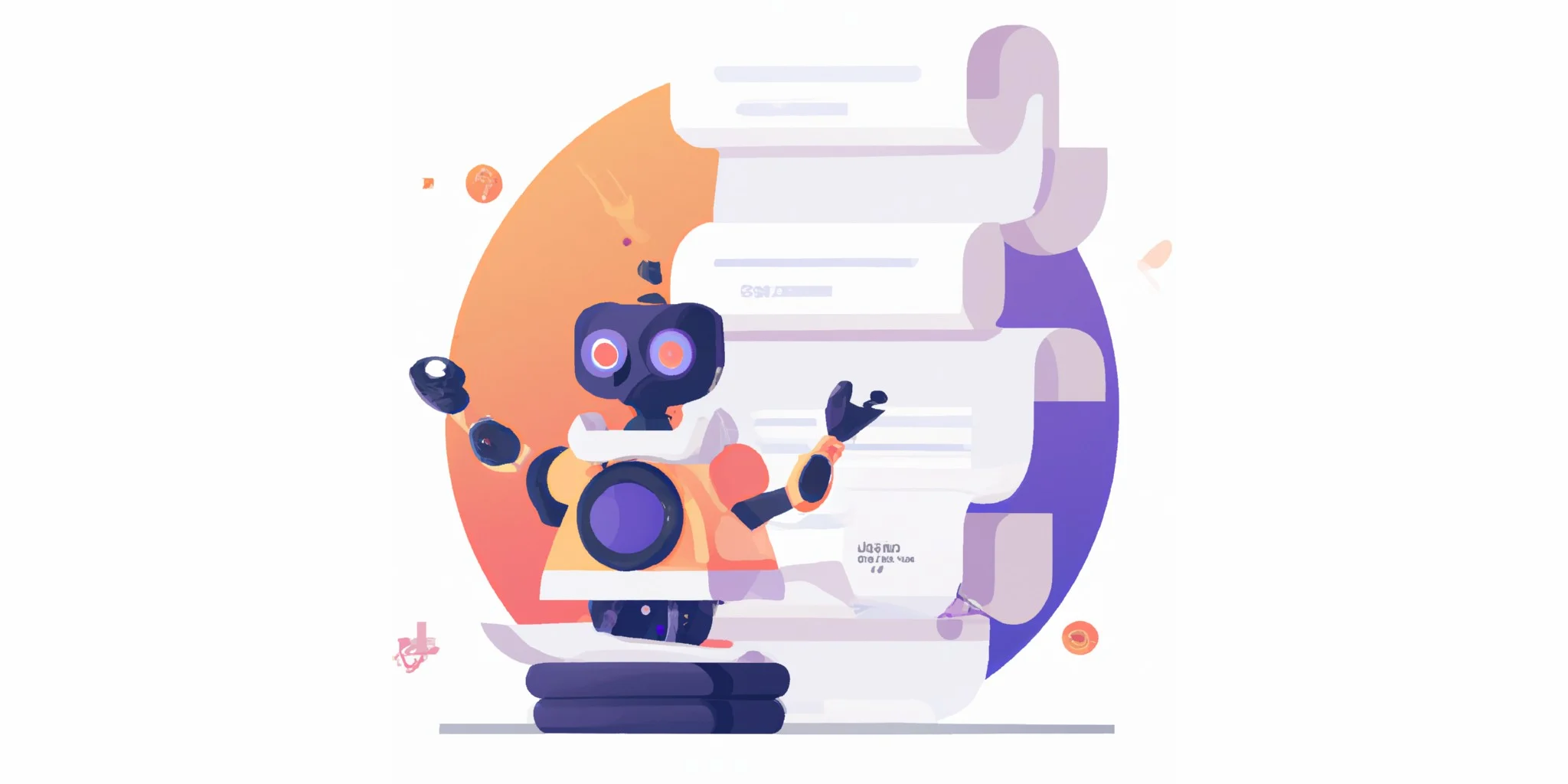Creating a Content Strategy is a crucial process for any successful marketing strategy. With the rise of AI technologies, marketers now have access to advanced tools that can optimize and automate various stages of content planning to boost efficiency and performance.
In this comprehensive tutorial, we will walk through how to leverage different AI tools to enhance your content planning with AI process, from conducting in-depth keyword research to ideating high-performing content ideas and optimizing content for maximum reach and engagement. Follow along to learn how AI can take your content plan to the next level.
The Benefits of Creating your Content Strategy using AI
Creating and following a ai powered content strategy offers a wide range of advantages and benefits :
- Save time: AI tools help with automating content strategy and time-consuming tasks like keyword research, allowing you to focus on high-level strategy.
- Identify new opportunities: AI reveals valuable insights like trending topics and search gaps that human analysis could miss.
- Create better content: AI content analytics tools provide data to optimize content for specific keywords and maximize engagement.
- Improve workflows: AI streamlines collaboration, content formatting, approvals, and more to increase efficiency.
- Enhance scalability: With AI support, content teams can produce more high-quality content plan at scale.
- Increase ROI: Fine-tuned content optimized by AI converts better, driving measurable ROI gains.
- Competitive Advantage: AI tools analyze competitors’ content strategies, enabling you to identify their strengths to differentiate from and weaknesses to capitalize on. This provides a competitive edge.
- Consistent Quality: AI augments human limitations allowing for more content to be produced consistently, minimizing dips in quality that can occur when scaling content production. The combination of AI and human oversight results in reliable quality.
By using AI content tools into various stages of the content planning process, from research to ideation and beyond, marketers can work smarter, not harder. Now, let’s explore how.
Step 1 – Conduct In-Depth Niche & Keyword Research with AI

Thorough keyword research is the foundation of an effective content strategy. The right keywords attract qualified organic traffic, guide content creation and help measure content success.
AI tools can analyze millions of data points to surface valuable keyword opportunities and data much faster than manual analysis:
Keyword Gap Analysis
AI content tools like crawlIQ can audit your content plan and identify high-potential keywords that your site lacks content for. This “gap analysis” surfaces fresh keyword opportunities in your space.
For example, crawlIQ can analyze your site content against competitors using semantic search and NLP. It reveals which topics your competitors rank for that your site misses out on, presenting new keyword targets.
Tip: Read my article about Keyword Research using ChatGPT for different ideas how to use to uncover hidden keywords, this is the perfect ground base to create your content strategy!
Search Intent Analysis
Understanding user search intent is key for targeting keywords. AI can categorize keywords by the type of intent – whether informational, transactional, or navigational.
Tools like ChatGPT 4 group keywords by intent type so you can align content to each search goal. Informational content plan serves early-stage research, while transactional keywords demand product or service-focused content.
Keyword Difficulty Scoring
AI takes the guesswork out of assessing keyword difficulty. AI content strategy tools like Frase.io and SEMrush provide difficulty scores for keywords based on ranking competitiveness. This allows you to differentiate high-value catchable keywords from oversaturated phrases with low ROI potential.
Related Keywords and Questions
AI powers discoveries of additional keyword variations and questions around seed keywords for expanded research. Rather than relying solely on manual brainstorming, tools like crawlIQ and StoryChief automatically surface highly relevant long-tail keywords and questions using semantic search and natural language processing.
Up-to-Date Search Volume Data
Keyword search volume data fluctuates constantly. Rather than using outdated keyword data, ai seo tools like SEMrush and Majestics tap into the latest search volume API sources to provide real-time difficulty scores and monthly search volumes. This ensures your research is based on current search behavior. There are also many free tools like Google Keyword planner you can use to compile a list of keywords related to your niche, and head over to ChatGPT to analyze, sort and organize the data!
By leveraging AI for comprehensive keyword research, you gain data-driven insights to optimize your ai powered content planning and align content to in-demand topics.
Keyword Grouping
Use ChatGPT or other tools to group a set of keywords by topic and relevance! This way you get a good idea of content gaps and how to fill them! You can directly upload your keyword .csv files to ChatGPT 4 and ask to group the keywords, come up with semantic keywords, or generate long tail keywords for fast rankings!
Step 2 – Use AI to Conduct Content Audits and Analysis
The next step is auditing your existing content. AI gives you an aerial view of your content, identifying optimization opportunities.
Technical SEO Audits
AI-powered SEO tools like SEMrush crawl your site pages and perform technical SEO audits at scale. This catches critical issues like broken links, meta tag problems, site speed, and accessibility errors to address.
Fixing these website health issues improves organic visibility and prevents content plan from underperforming due to technical factors.
Content Gaps and Alignment Analysis
An AI-driven content analysis reveals gaps where your content does not fully align with your most valuable keyword targets. With semantic search, AI analysis tools can map your existing pages against researched keywords to clearly identify content gaps.
This enables creating aligned, optimized content specifically for your priority keywords. AI saves time over manual auditing and gives you an exact view of content needs.
Content Optimization Insights
AI analytics tools provide detailed data on your content’s engagement and performance. For example, StoryChief’s Content Insights shows how specific pages and posts are performing over time across read rate, completion rate, shares, and more KPIs.
These AI-generated insights pinpoint your best and worst performing content plan to double down on what converts and optimize or retire poor content.
SEO and Readability Analysis
AI performs advanced SEO and readability analysis on your content, scoring elements like title and meta tag optimization, heading usage, image optimization, links, length, reading level, and more.
This surfaces specific areas to improve existing content for higher rankings and engagement. AI delivers a level of analysis impossible to perform manually at scale.
In summary, auditing your content with AI provides unrivaled insights to maximize your content plan quality and performance.
Step 3 – Creating A Content Strategy Using AI

The most creative, brilliant content ideas mean nothing without proper execution. AI helps bridge the gap between ideas and execution by bringing structure and optimization to ideation.
Topic Clustering
From broad keyword research, AI tools extract and cluster related topics and themes to ideate content around. For example, StoryChief‘s Topic Generator groups keywords into core themes to create content around. This provides a framework to ideate content methodically.
Outline and Structure Suggestions
AI can provide initial outline suggestions for new pieces, pulling from your researched keywords and topics. Tools like StoryChief and Jasper.ai allow inputting a core topic or keyword and will output an optimized outline to jumpstart the writing process.
Headline and Title Generation
Crafting catchy, SEO-optimized headlines is a skill in itself. Let AI lend a hand by generating headlines and titles optimized for your target keywords. Tools like StoryChief, Jasper, and Copy.ai can instantly generate dozens of headline options, combining creativity and optimization.
Content Gap Notifications
AI tools automatically notify you of content gaps found in your audit, prompting ideas for new content plan. For example, crawlIQ surfaces high-potential keywords lacking associated content and allows the creation of content ideas directly.
Content Feedback and Suggestions
AI provides real-time feedback and suggestions throughout the ideation process. As you flesh out an outline or draft, tools like StoryChief and Grammarly offer AI-powered recommendations to enhance the content. This amplifies your creativity on the fly.
The combination of research, structure, and optimization provided by AI allows ideating content strategically tailored to your goals.
Step 4 – Optimize Content for Maximum Impact
The real power of AI comes into play, optimizing your drafted content before publishing. AI gives content a final boost to resonate with your audience and reach its full potential.
Automated Keyword Optimization
One of the most tedious parts of optimization is sprinkling in relevant keywords naturally throughout content. AI tools like ContentStudio.ai can analyze drafts and seamlessly integrate target keywords in the right context. This ensures your core keywords are sufficiently optimized without awkward overuse.
SEO Recommendations
AI points out quick yet high-impact SEO wins tailored to your content pieces. For instance, Grammarly gives specific suggestions to enhance title tags, meta descriptions, image alt text, headings, and more to improve on-page optimization.
Readability and Legibility Scoring
Advanced AI readability analysis identifies areas in your content plan that may be difficult to digest. Tools like StoryChief provide granular scoring on sentence length, vocabulary complexity, reading level, paragraph density, and more. Tightening these elements boosts readability.
Tone and Style Recommendations
Based on an analysis of your brand style, audience, and content type, AI suggests ways to refine the tone for maximum resonance. Tools like INK provide style “warnings” on elements to tone down or strengthen while retaining your brand voice.
Content Structure Suggestions
AI assesses your content structure and organization, suggesting improvements to flow and transitions. This catches disjointed logic and improves the presentation of ideas and arguments for clarity.
Higher-Performing Alternatives
For certain phrases and sentences, advanced AI tools provide alternative wording choices statistically rated to perform better. For instance, StoryChief draws from its dataset to recommend improved versions of sentences.
Sources and Fact-Checking
AI can scan for credible sources and even cross-reference key facts and data points in your content against other sources to ensure accuracy and prevent misinformation.
By thoroughly optimizing content with AI guidance, you amplify engagement and conversion potential before ever hitting publish.
Step 5 – Distribute and Promote Content Efficiently
After creating your a content strategy, its time to get your content seen! Getting content seen by the right audiences requires distribution and promotion planning. AI lends a hand here as well.
Recommended Distribution Channels
Based on content analysis, AI tools suggest optimal distribution channels for each piece. Long-form tutorials may perform best on your site and YouTube, while short tips excel on LinkedIn and Twitter. AI guides best-fit channel targeting.
Audience Insights for Targeting
AI provides intelligence on which precise segments of your audience to target with each post based on interests, behaviors, demographics, and more. Tools like Demandbase and Drift inform the audience’s understanding of segment distribution.
Optimal Posting Times
While promoting content across channels, allow AI to determine the best times and days for engagement. Sprout Social’s AI identifies when your audiences are most active on each platform and suggests ideal posting times.
Performance Forecasting
AI tools can forecast the expected engagement for a piece of content before publishing it based on historical data. For instance, Buzzsumo analyzes your content performance data to predict the potential reach, engagement rate, and ROI for new posts.
Ongoing Performance Monitoring
AI tracks key post-publication metrics across channels and provides actionable insights to further distribute and promote high-performing content. For example, StoryChief’s Content Insights presents ranking analytics and helps identify content worth additional investment.
With AI analyzing your distribution and promotion strategy, you get your content in front of the highest-value audiences when they are most receptive.
Best Practices For Combining AI With Human Creativity in Content Planning
While AI provides a wealth of strategic advantages, integrating technology alongside human creativity is essential for impactful content. Keep these best practices in mind:
- Use AI to unearth insights, then apply human intelligence for interpretation and strategic decision-making.
- Leverage AI for optimization and structure while maintaining brand voice and style.
- Treat AI suggestions as inspiration to boost your own ideas rather than replace creativity.
- Validate AI-optimized content with human quality checks before publishing.
- Maintain oversight of AI tools to dictate use according to your goals.
- Combine AI data with insights from creators, customers, and market specialists.
- Continuously test and refine your application of AI in the content process.
The synergy of AI efficiency and human ingenuity can elevate content well beyond what either can achieve independently. Find the optimal balance for your team.
Create your Content Strategy with AI Round-Up
Integrating AI tools throughout the content planning and production process, from research to optimization, provides a strategic advantage for today’s marketers. AI unlocks insights, drives efficiency, and maximizes performance.
By following this step-by-step guide on applying AI across the AI for content marketing, you can work faster and smarter. AI frees creators to focus on big-picture strategy and creative ideation while enhancing output through data and automation.
To recap, tap into AI for keyword research, content audits, ideation, optimization, distribution, and more to unlock the full potential of your content. Combined judiciously with human creativity, AI propels marketing content to new heights.
Now is the time to leverage AI and transform the way you plan, create, and manage content for measurable gains. With the right technology toolkit, your content will be primed to resonate and convert across every stage of the customer journey.


